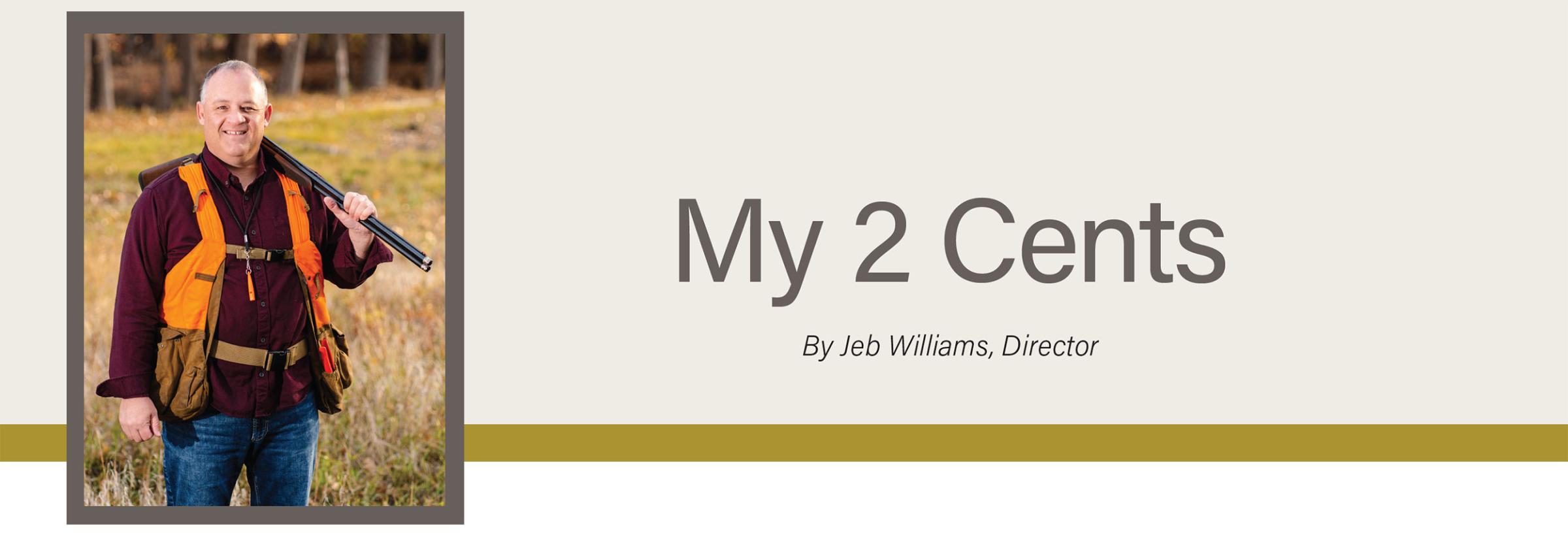
My 2 Cents
In this space in the March-April issue of North Dakota OUTDOORS, I addressed ongoing drought conditions and some of the concerns leading into spring and summer. The ink was hardly dry, and we were hit with a couple massive snowstorms, followed by several rain events that have left certain areas of our state waterlogged.
Prime examples, certainly, that once again demonstrate how quickly things can change in North Dakota.
Many people wondered how the spring storms impacted wildlife and while we know from experience that most devastating spring storms aren’t exactly what wild critters need after a long winter, it was hard to turn down the precipitation that rejuvenated our important grasslands and wetlands these same wild critters rely on during their reproductive seasons.
The 2022 fall deer season is upon us. Well, at least the application season is. It was as difficult a year as any for our big game biologists to set deer license numbers due to the disease outbreak which took place beginning in early August 2021 and continued into late October.
Epizootic hemorrhagic disease is no stranger to southwestern North Dakota but unfortunately introduced itself to other areas of the state and in some parts left quite an impression as many white-tailed deer were lost.
The challenge with a bad EHD outbreak has always been the same. How many deer licenses do wildlife managers trim, considering the inconsistency of mortality across units? Some areas within a unit see a much higher mortality rate than others and so what may make sense for a portion of the unit doesn’t make sense for the entire unit.
I want to commend our big game staff for their decisions while trying to manage the inconsistency of the EHD outbreak across the landscape and making the necessary and bold determinations to significantly reduce deer licenses in hard-hit hunting units. Consistent with most years, the decision will likely find some in agreement and leave others frustrated that we went too far or not far enough.
